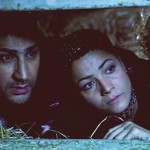My Tehran for Sale: The Persian Connection
 Unofficial co-productions work better for smaller projects, the creators of the Australia-Iran drama My Tehran for Sale told Miguel Gonzalez.
Unofficial co-productions work better for smaller projects, the creators of the Australia-Iran drama My Tehran for Sale told Miguel Gonzalez.
The story about a young female actress forced to lead a secret life in order to express herself artistically, takes place mostly in Tehran and is spoken in Farsi. It was not produced using one of the official treaties or MOUs, yet My Tehran for Sale is the first Australian-Iranian feature film co-production, and according to its creators, there is something inherently Australian about it.
“We had long discussions about the Australian component,” says 34-year old director Granaz Moussavi. “It’s not on screen for very long, but its presence is dominant throughout the film, and strong enough to make it an Iranian-Australian story. From the first moment, the character is trying to migrate to Australia; that makes the story important to this society and encouraged Australian bodies to invest on it. Going ahead with this film and funding it was very courageous of them. It’s the first time that an Australian team has gone to Iran and collaborated with local crews; considering the language and cultural barriers, they took a risk.”
RIGHT PLACE, RIGHT TIME

